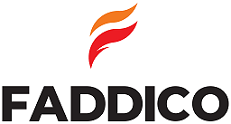Have you ever wondered why the branded mug you got at a convention a few years ago is still on your desk? Or how does a bag you received from your favorite clothing store somehow become a must-have for running errands? This is because promotional items have extraordinary power in this era, where digital marketing is everywhere, building memorable brand experiences.
However, it’s a fact that more than giving away free items is needed in the current competitive environment. The past several decades have shown us how innovative execution and strategic preparation can boost a marketing campaign from ordinary to extraordinary. Thus, you’ve come to the correct spot if your goal is to maximize ROI with promotional products in 2024. But! First, let us tell you about the importance of
The Importance of Promotional Merchandise
Products that promote your business are like tiny brand ambassadors, serving as physical indicators that keep consumers thinking about your company. Imagine receiving a pen featuring a company’s logo while attending a conference. That pen reminds you of that brand each time you use it. Every time you write something down, it’s like some advertising.
Moreover, they foster goodwill, and free stuff is always fun. These products encourage favorable associations with your brand and are adaptable for everyone, from pens and mugs to t-shirts and USB drives. Hence, promotional gifts are a wise investment in increasing the word about your company, whether you’re attempting to draw in new clients or reward existing ones.
Tips to Maximize ROI with Promotional Products
Join us to understand how to use strategic insights and customized tactics to attract consumers, create enduring connections, and enhance your brand’s visibility. Let’s explore the tips to maximize Roi with promotional products!
1. Setting SMART Objectives
To make your promotional goods stand out and generate revenue, you must establish SMART objectives. What does that mean? You should make sure your goals are time-bound, relevant, specific, measurable, and achievable.
In essence, you want recognizable targets that you can monitor and strike. However, by selecting the appropriate items and promoting them following these SMART objectives, you’re positioning yourself for a targeted, quantifiable campaign that is sure to be successful.
2. Understanding Your Target Audience
A solid understanding of the target society is essential to every effective marketing strategy. Businesses can customize their messaging and product offerings to better suit the tastes and lives of their target clients by creating thorough customer profiles. This focused strategy raises the chances of success and improves the efficacy of promotional activities.
3. Selecting High-Quality, Functional Products
As time goes on, quality is becoming a top priority for humans. Likewise, promotional items must be of the highest caliber in 2024. Selecting well-made, long-lasting, and truly valuable products for the target audience ensures a strong brand connection and increased possibility of retention. While inferior goods can backfire, harming a brand’s reputation and lowering the return on investment.
4. The Power of Personalization
Customization of promotional items is similar to enhancing your marketing strategy with a unique touch. Everything comes down to customizing products to your audience’s unique inclinations and tastes. Personalization gives your promotional products a more distinctive and valued feel, whether adding a name to a mug or making unique designs that target your target audience.
And you know what’s great about it? You can be sure that when someone feels you designed something specifically for them They will use it, retain it, and remember you. More value for your money and a closer bond with your audience result.
5. Leveraging Technology for Engagement
The miracle happens when you combine technology with promotional items! Consider NFC chips, QR tags, and social networking links—they’re like hidden tools for monitoring your progress and increasing participation. With these tips, you can monitor the results of your efforts and make conversations more enjoyable for your friends. Furthermore, all that appealing information lets you design future campaigns that will be even more awesome.
6. Creative Distribution Strategies
Suppose that your usual promotional giveaways are no longer being given out. You will learn clever tricks that will help you maximize ROI with promotional products while putting those things out there and being rather noticeable. Consider engaging with influencers who can help you spread the word like wildfire, organizing contests that touch people’s interest, creating engaging loyalty programs, and making it an entertaining game your customers can play.
Rather than focusing only on giveaways, these innovative strategies aim to make genuine relationships, differentiate themselves from the competition, and maximize the return on your investment.
Challenges and Overcoming Them
Everyone has seen those cheap pens or stress balls with logos gathering dirt in a drawer. Those are examples of poorly executed promotional items! There are several ways in which business owners may fail to maximize ROI with promotional products. First, failing to establish specific objectives may result in random product selections that fail to connect with the target market.
Second, sacrificing quality might harm their reputation as a brand. Lastly, failing to consider innovative distribution methods results in missed chances to get items into the proper hands. Companies may leverage promotional swag as a marketing strategy through strategic planning and focusing on high-quality, niche items.
Measuring and Tracking Success
While promotional goods can be an effective marketing tool, how can their effectiveness be determined? Here are five essential methods for monitoring and tracking your progress so that you can determine your return on investment:
- Establish objectives like more customer involvement, sales, or brand exposure.
- Track data such as revenues attributable to marketing initiatives, social media interaction, and website traffic.
- To monitor conversions and assess efficacy, provide promotional goods with unique codes or links.
- Get feedback via surveys or face-to-face interactions to determine how people see promotional items and how they affect purchases.
- Review and evaluate data often to spot patterns, calculate ROI, and plan for the following initiatives. Through regular performance assessments against predetermined criteria, firms may modify their plans to maximize return on investment and guarantee that their promotional endeavors stay pertinent and efficient.
Conclusion
To maximize ROI with promotional products, careful planning, accurate targeting, creative execution, and data-driven decision-making are required. Using these strategies and realizing the possibilities of promotional goods can help businesses increase customer connections, brand exposure, and success in 2024 and beyond.
Q. What marketing ROI is good?
Making five dollars for every dollar spent is a vital marketing ROI and the most straightforward response to this query. On the other hand, a 10:1 marketing ROI is extraordinary.
Q. What is the formula for the ROI of promotion?
Regarding promotions, ROI is calculated as follows: ROI = (Net Profit from Promotion – Cost of Promotion) / Cost of Promotion. This formula determines the profitability of a marketing campaign by dividing the net profit made by the campaign’s execution costs.
Q. What are some cutting-edge methods of distributing promotional goods?
One of the creative approaches is to work with influencers. Additionally, to increase brand awareness and engagement, run competitions, implement loyalty programs, and provide interactive experiences like gamification.
Q. How is a promotion analyzed?
To determine how the promotion influenced your bottom line, compare the typical sales during non-promotional times with the sales statistics during the campaign. Analyze revenue data to determine whether the average order or client lifetime value has changed.





